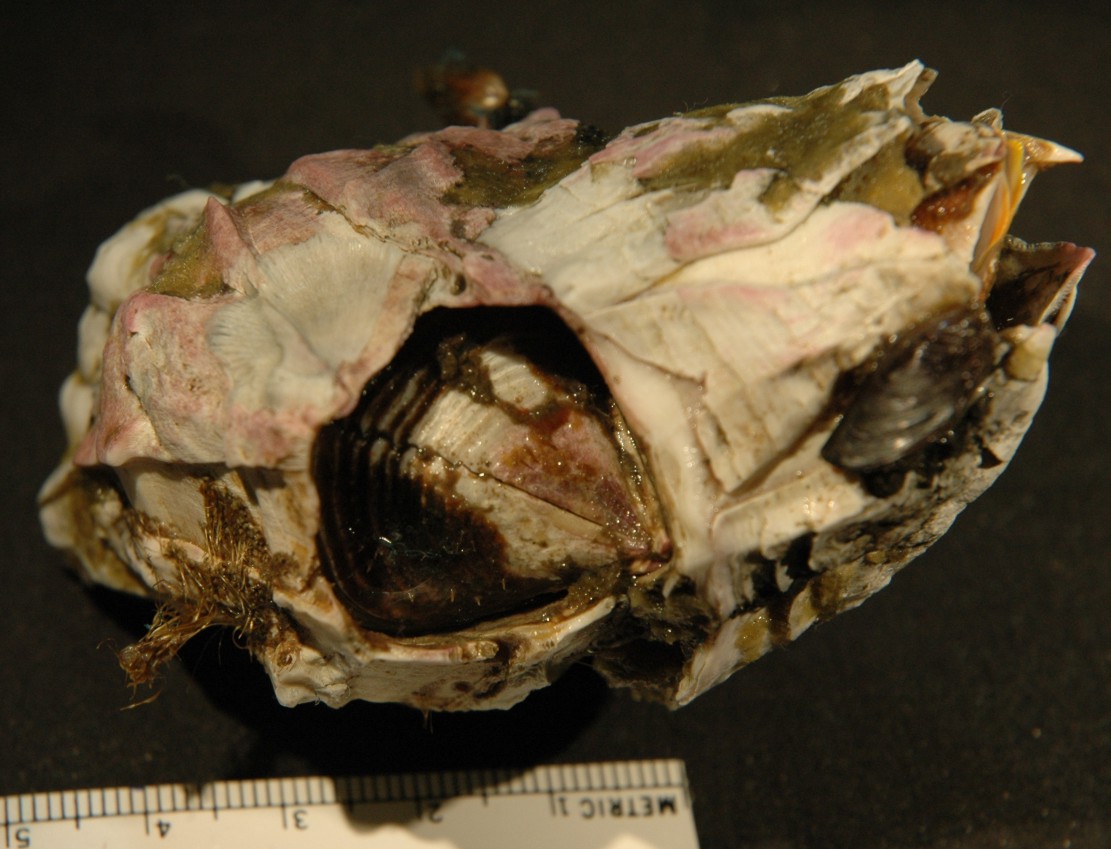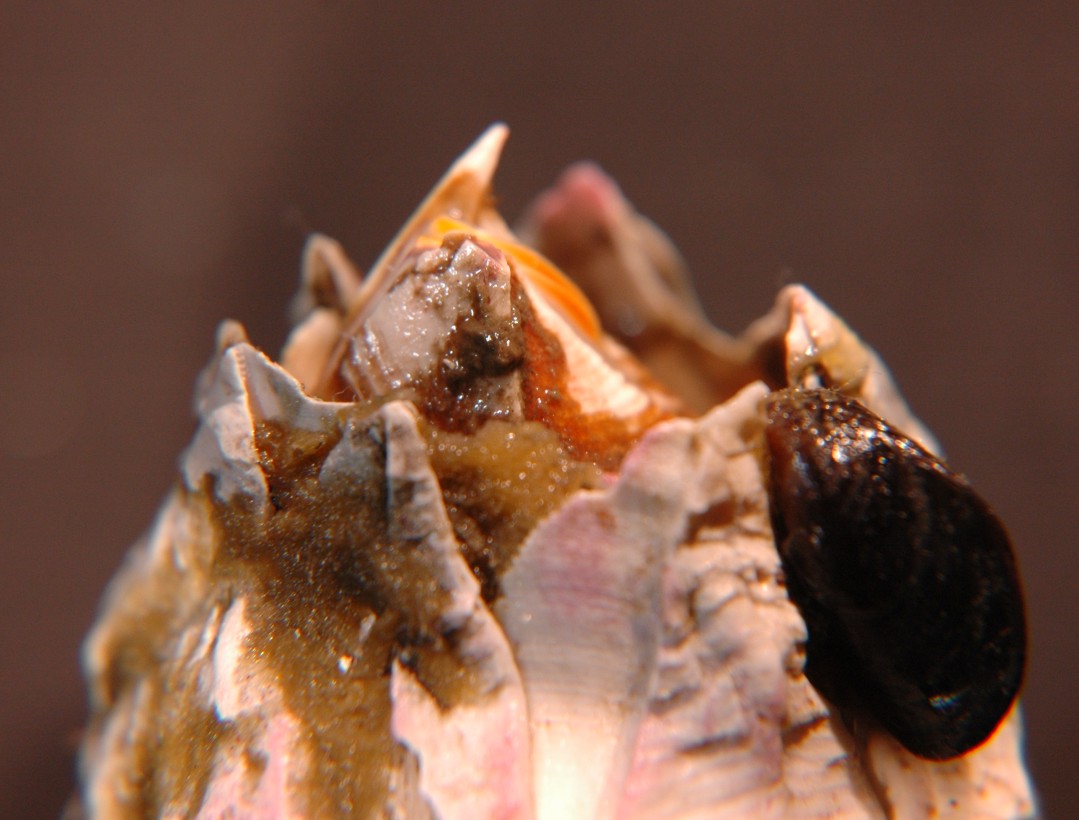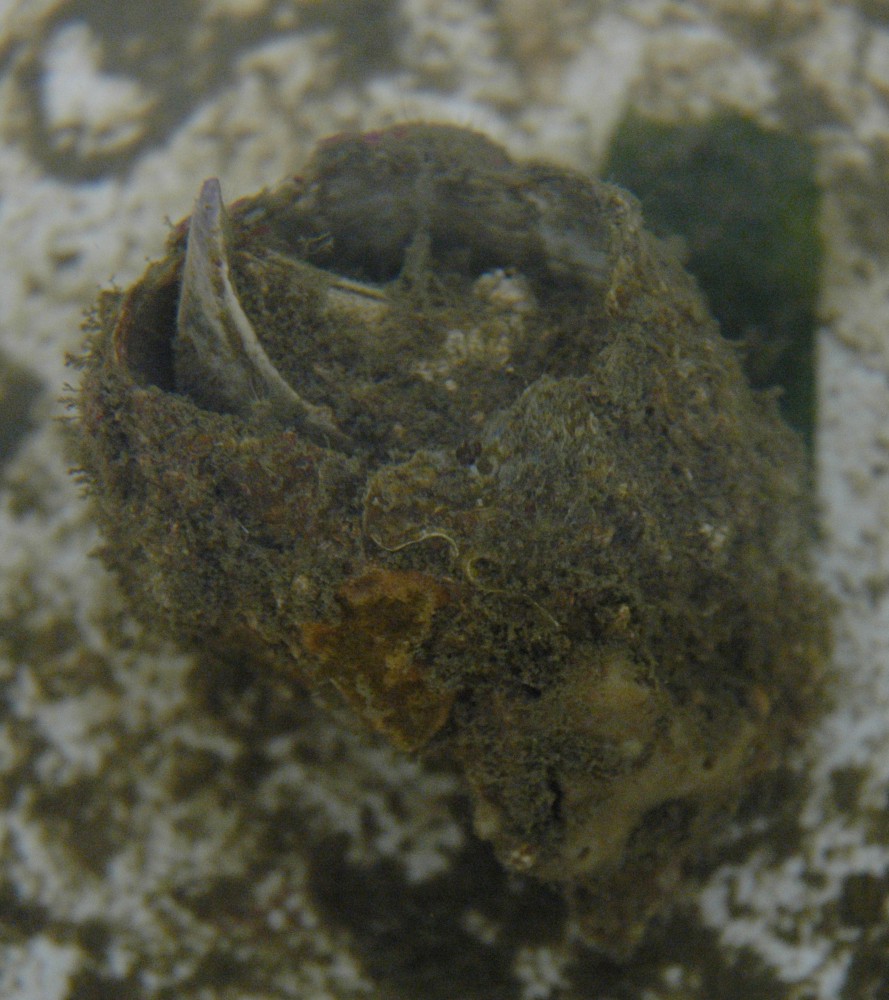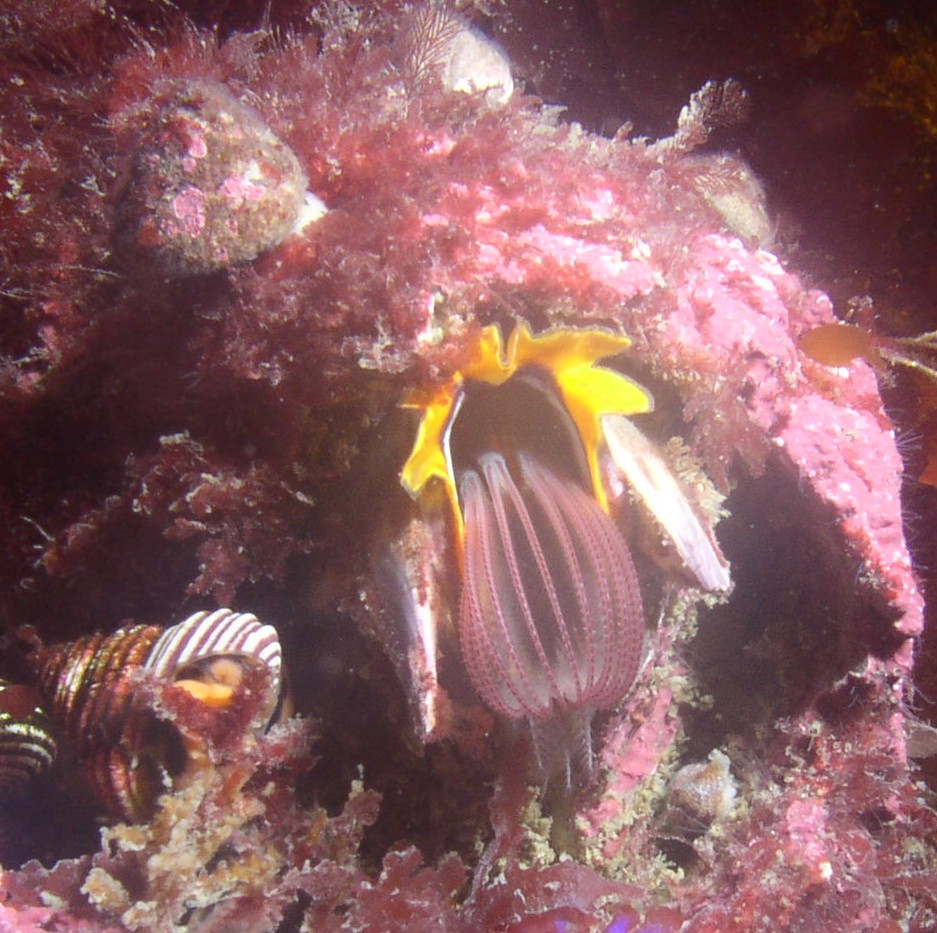Balanus nubilus Darwin, 1854Common name(s): Giant barnacle, Giant acorn barnacle, Horse barnacle |
|
| Synonyms: |  |
| Phylum Arthropoda
Subphylum Crustacea Class Maxillipoda Subclass Thecostraca Infraclass Cirripedia Superorder Thoracica Order Sessilia Suborder Balanomorpha Superfamily Balanoidea Family Balanidae |
|
| Balanus nubilus from about 10 m depth near Rosario. Note how several individuals are attached to each other. | |
| (Photo by: Dave Cowles, July 2006) | |
How to Distinguish from Similar Species: This is the largest barnacle likely to be encountered in this area, and perhaps in the world. Most other species here are less than 5 cm diameter. Of barnacles with beaklike terga, Semibalanus cariosus has thatchlike projections on the wall plates (unless eroded). The subtidal Balanus balanus and B. rostratus are rarely greater than 3 cm diameter and the walls of large individuals are much less eroded. B. balanus has septate tubes in the wall plates and B. rostratus has shiny overlaps between the plates. In California it can be distinguished from the large Balanus aquila because it has beaked terga and no longitudinal striations on its scuta.
Geographical Range: Southern Alaska to San Qintin, Baja California, Mexico.
Depth Range: Low intertidal to 90 m
Habitat: Mostly subtidal rocks; some very low intertidal or may be found on pilings. Common in areas of current or waves.
Biology/Natural History: The plates of this species may be heavily eroded by the boring sponge Cliona. Often grow on one another, forming clusters (druses). Barnacles are hermaphroditic, and fertilization is internal. They brood their eggs for several weeks before releasing them as nauplii. The nauplius molts to a cypris, which feeds in the plankton then settles and metamorphoses into an adult. Predators of this species include Pisaster ochraceous. The empty shells are refuges for Cancer oregonensis and Octopus rubescens. This species contains very large muscle fibers which have been used in the study of muscles.
| Return to: | |||
| Main Page | Alphabetic Index | Systematic Index | Glossary |
References:
Dichotomous Keys:Flora and Fairbanks, 1966
Kozloff 1987, 1996
Smith and Carlton, 1975
General References:
Gotshall,
1994
Gotshall
and Laurent, 1979
Harbo,
1999
Kozloff,
1993
McConnaughey
and McConnaughey, 1985
Niesen,
1997
O'Clair
and O'Clair, 1998
Ricketts
et al., 1985
Sept,
1999
Scientific Articles:
Web sites:
General Notes and Observations: Locations, abundances, unusual behaviors:
This species is very common subtidally around Northwest Island, and also common on Sares Head.

The beaked terga (one of them in this individual is broken) and the
orange-yellow orifice in a partly opened animal are visible here.

Here is a photo of an unbroken individual. Since the movable
plates are entirely closed the yellow tissue inside cannot be seen.

Balanus nubilus feeding. Underwater photo
by Kirt Onthank
July 2007. The snail to the left is Calliostoma
ligatum.
Authors and Editors of Page:
Dave Cowles (2006): Created original page